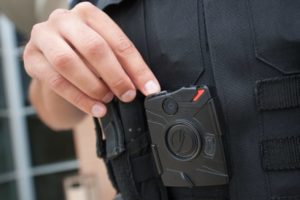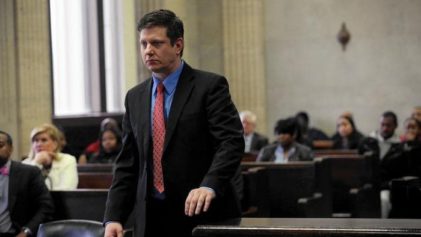
Photo by Kyle Telechan / Post-Tribune
Chicago city officials announced Wednesday, Dec. 28, that all city police officers would be equipped with body cameras by the end of 2017 — one year ahead of schedule.
News of the accelerated plan to outfit the city’s 12,500-plus officers with the chest-mounted devices came just months after authorities revealed plans to expand the 2015 body-cam pilot program into all 22 city districts by 2018, the Chicago Tribune reported.
There are currently about 2,000 body cams in use throughout seven police districts, but no word on how many additional cameras are needed to equip officers in the remaining 15 districts or how much the new expansion will cost.
“The citywide use of body-worn cameras within the Chicago Police Department will provide a greater sense of self-awareness to both officers and the individuals that they interact with,” police Superintendent Eddie Johnson said in a news release.
Mayor Rahm Emanuel echoed the police superintendent’s sentiments, stating that while the small devices are “not a panacea, [they] are a win-win for officers and the public.”
“They provide a firsthand look at the dangerous situations officers encounter on a daily basis and improve transparency, while building trust,” Emanuel added.
The hastened move comes after the Chicago Police Department faced severe public scrutiny following the release of graphic police dash-cam video showing former officer Jason Van Dyke ruthlessly shooting 19-year-old Laquan McDonald 16 times as the teen, who was armed with a knife, walked away. The deadly police shooting prompted a federal investigation by the U.S. Justice Department, after which Emanuel promised to make sweeping changes to the city’s police department, which included implementing body cameras.
The Chicago police body-cam pilot program launched in the Shakespeare District in 2015 and soon spread to six other districts, according to CBS News. Now, authorities are looking to roll out the program citywide in an effort to restore trust between themselves and the various communities they serve.
“The policy is the officer will turn on the camera,” Chicago Police Commander Marc Buslik said. “They are being held accountable for doing so. The net benefit is greater safety and security to our officers and an overall improved interaction with the with our communities.”
Some have argued that the new body cameras could take some getting used to, as with any new piece of technology.
The officer who shot and killed Black teen Paul O’Neal after a wild car chase and subsequent foot pursuit in August didn’t have his body camera on, but Fraternal Order of Police President Dean Angelo said that was because officers in the district had just received the cameras and were not properly trained on how to operate them.
“We want to make sure they are trained properly beforehand,” Angelo said. “We don’t want officers vilified for an honest mistake.”
The FOP president went on to argue that the officer’s camera was indeed on but accidentally switched off prior to the encounter with O’Neal. Still, skeptics believe the officer intentionally shut the camera off to hide his misconduct.
Critics of the city’s body-cam expansion expressed concern that the new measure would violate the privacy of working officers, but Buslik assured them that the benefits of the new cameras far outweighed the negatives.
“I think any of those concerns is offset by the fact that having our own recording of an incident provides a much better, much fuller description of what took place than a 40-second clip on YouTube,” he said.


